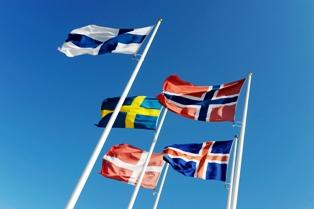The term "Scandinavian countries" is used to denote a region in Northern Europe, uniting Denmark, Norway, Sweden, as well as related autonomous territories located in the North Atlantic. These are Greenland, Faroe Islands, Svalbard, Aland Islands. Many experts argue that it should be used as a synonym for all northern countries (Nordic), including Finland and Iceland. If we consider strictly geographically, then on the Scandinavian peninsula there are only Norway, Sweden and the north-western part of Finland. There is still such a definition as Fennoscandia. It is characteristic of the physical-geographical country, which includes Denmark, Finland, the Kola Peninsula and Karelia.

The Scandinavian countries have a common early history (such as Russia, Ukraine and Belarus), related cultural characteristics and social systems. Danish, Norwegian and Swedish form a continuum of dialects, and they are all considered mutually intelligible to each other. If we talk about the Faroe and Icelandic (Scandinavian island) languages, then they differ significantly from them - maybe only with the exception of some words borrowed from each other throughout history. Greenland generally belongs to the Eskimo-Aleutian group.
The name "Scandinavian countries", according to many historians, is relatively new. It was introduced in the eighteenth century as a term for three kingdoms (Denmark, Sweden, Norway), which had a common historical, cultural and linguistic heritage. But it was actively received in the nineteenth century in connection with the development of the movement, known as pan-Scandinavism, campaigning for a single national idea. It was popularized to a large extent thanks to the famous song composed by Hans Christian Andersen, which speaks of a holistic people. The famous writer after his visit to Sweden became an active supporter of the movement. He sent the lyrics to his friend and wrote that he suddenly realized how closely “our peoples” are connected.
Presumably etymologically, the name "Scandinavian countries" is associated with the historical region of Scania, which is located in southern Sweden. Both terms, “Skåne” and “Skandinavien”, are derived from the Germanic root “Skaðin-awjō”. The vast majority of Danes, Swedes and Norwegians are descendants of several Germanic tribes inhabiting the southern part of the peninsula and the northern part of Germany. They spoke the German language, which over time was modified into Old Norse (known as the northern language in the Middle Ages).
Nevertheless, even if the Finnish language has no common roots with this ancient language (it belongs to the Finno-Ugric group), one should take into account the fact that Suomi was historically and politically connected with all three countries. Iceland, which was actively settled by the Norwegians since the eleventh century, and in 1814 became part of Denmark, can also be safely included in the category of “Scandinavian countries”.
Interesting facts from the general history: for over 500 years there has been a close connection in foreign policy, starting with the attack of Higelak, the Geta ruler mentioned in Beofulf, on Gaul, and the unsuccessful campaign of the King of Norway Harald III the Cruel to England in 1066. Another community is the rejection of Catholicism (in favor of Lutheranism) at a time when it was a single religion in all of Western Europe. In addition, there were such cases when all the kingdoms of the region united under one control - for example, Knut the Great, Magnus the Good. The most striking example of coexistence is the Kalmar Union. The yellow-red flag of this union is still used in some cases, thus uniting Scandinavia.
Today, all countries in the region are actively participating in joint promotions through a tourism union that cooperates with many agencies (including the Scandinavia Tour) in many parts of the world.